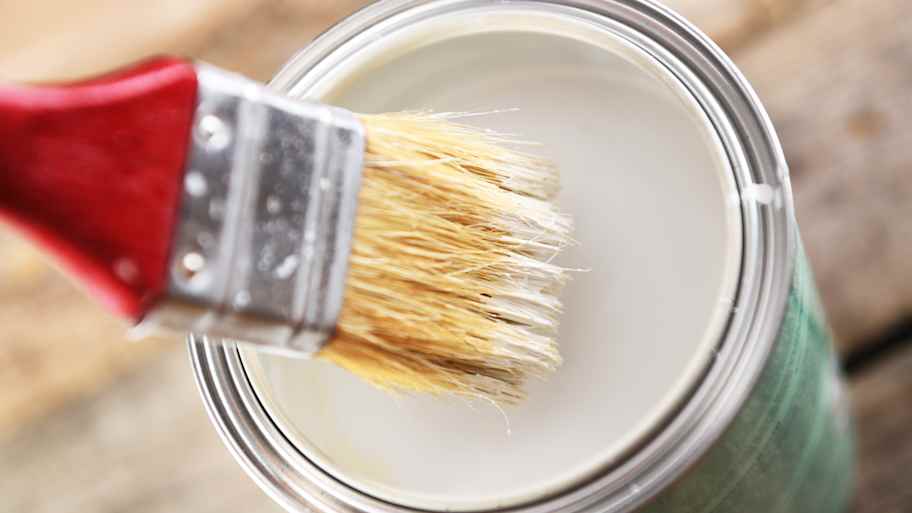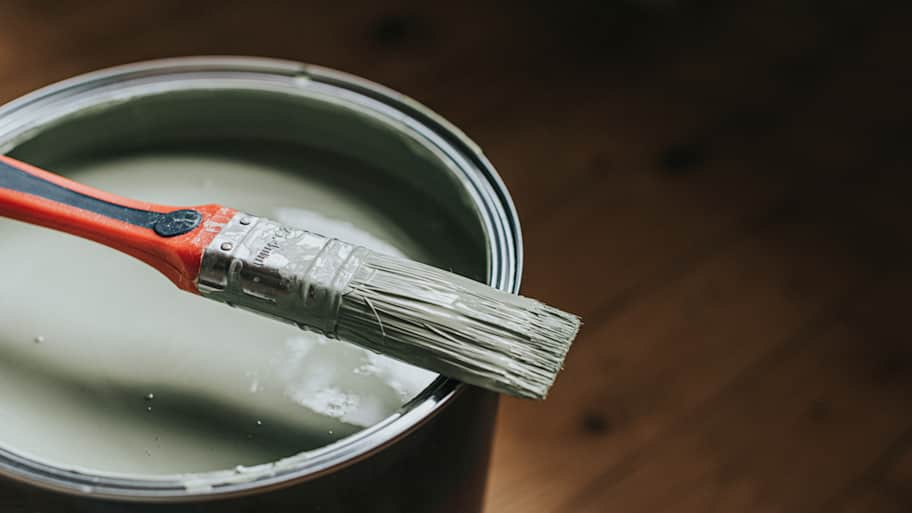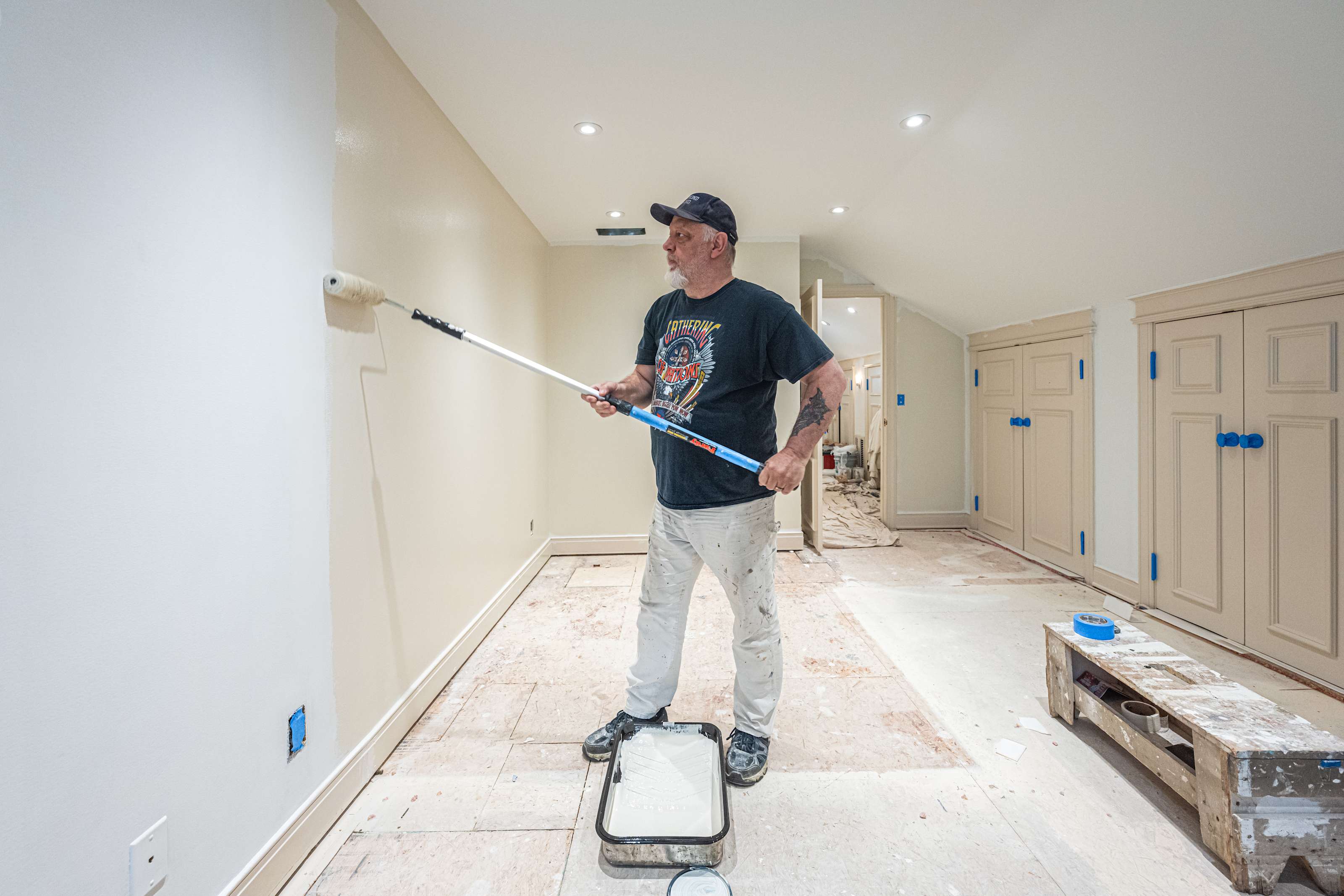
The cost to paint the interior of a house in Portland, OR depends on size, layout, type of surface, and more. Learn what factors can influence your total in this guide.
Get it right without giving yourself a headache


Walls take center stage when painting, but those huge blank canvases are nearly impossible to mess up. Trim, on the other hand, has been frustrating amateur painters since the dawn of time. One false move can lead to multiple redos and plenty of headaches. Don't fret. Here are some tips for painting trim to achieve pro-level results without too much fuss.
Before breaking out the paint brush, take some time to clean and sand the trim.
Wash the area to remove anything icky.
Clean with a cloth and a gentle solution—either a store-bought wood cleaner or a simple mixture of warm water, vinegar, and dish soap.
Sand the trim, rubbing out any inconsistencies.
We recommend 220-grit sandpaper for this job, but trim that's in rough shape could benefit from 100-grit sandpaper.
An oil-based primer will help the paint stick. Work slowly and let it dry for a couple of hours. Finish up the prep work by filling in any holes and dents.
For large dents and gouges, use a wood filler. Go at smaller dents with a spackling compound and use caulk for actual holes. Shine a light on the trim to ensure everything is even before moving on to the next step. If necessary, grab the sandpaper again and give the prepped trim a quick pass.

Most pros recommend oil-based paint for trim, as it doesn't dry as quickly as water-based paint and tends to leave a smoother surface with fewer brush marks. However, DIYers should look into water-based paint. It's environmentally friendly, easier to clean, and smells a whole lot better.
At the end of the day, total amateurs should probably choose water-based paint, while people with some experience should go for oil-based paint. Semi-gloss and high-gloss paints are great for trim because they’re the most durable and easy to clean.

This largely depends on the type of paint you went with, but there are some good tips for choosing a paint brush for trim.
For water-based paint, choose a synthetic brush made from nylon, polyester, or both. This will prevent the bristles from losing strength during the job. If you choose oil-based paint, go with a natural-fiber brush. These contain various types of animal hair that hold onto oil paint well.
The size of the brush depends on the size of the trim.
| Trim Width | Paint Brush Size |
|---|---|
| Small (<2 inches) | 1 to 1 1/2 inches |
| Moderate | 2 to 2 1/2 inches |
| Wide | 3 inches |
If you're not painting the walls along with the trim, tape off any areas you don't want paint to splash onto. Don't overload the brush with paint. Remember, trim is thin and it doesn't take a lot of paint to cover an area.
There are two techniques worth considering:
Cutting-in involves pulling the brush along the edge of the trim, moving closer to the center with each stroke.
The lay-on lay-off technique involves quick back-and-forth brushstrokes, followed by dragging the tips of the bristles over the wet paint to spread it around.
Once finished, let everything dry before moving on to another coat if required.
It's extremely important to air out the area between coats. This will minimize the tell-tale smell of paint throughout the area and dissipate any VOCs. It also lets the paint dry properly and tells you whether another coat is necessary.
Open the windows to let air in for about an hour. If the room has no windows or no breeze comes in, introduce a fan or two.
Painting trim is an exacting and occasionally frustrating project. The best way to avoid complications is to contact a local interior painter. There are several benefits to going with a pro, including a better end result and expert advice on the best paint type for the job. Pros can also handle other painting projects around the home beyond trim. Hiring a local interior painter costs $2 to $6 per square foot.
From average costs to expert advice, get all the answers you need to get your job done.

The cost to paint the interior of a house in Portland, OR depends on size, layout, type of surface, and more. Learn what factors can influence your total in this guide.

The cost to paint the interior of a house in Austin, TX depends on size, layout, type of surface, and more. Learn what factors can influence your total in this guide.

Refinishing stairs is a great way to spruce up one of a home's most dominant focal points. High-quality wood should be allowed to shine. Learn the cost to refinish stairs in this guide.
.jpg?impolicy=leadImage)
Painting your kitchen cabinets may take some elbow grease, but you’ll get a kitchen makeover without a lot of money. Here’s how to paint cabinets for a new look.

Need to refresh your home’s interior but not sure which paint to choose for your doors? Learn about the best paint for interior doors for look and longevity.

If your home has windows galore, you’ll want to pick a color scheme that plays to that advantage. Use these paint colors for rooms with lots of natural light.